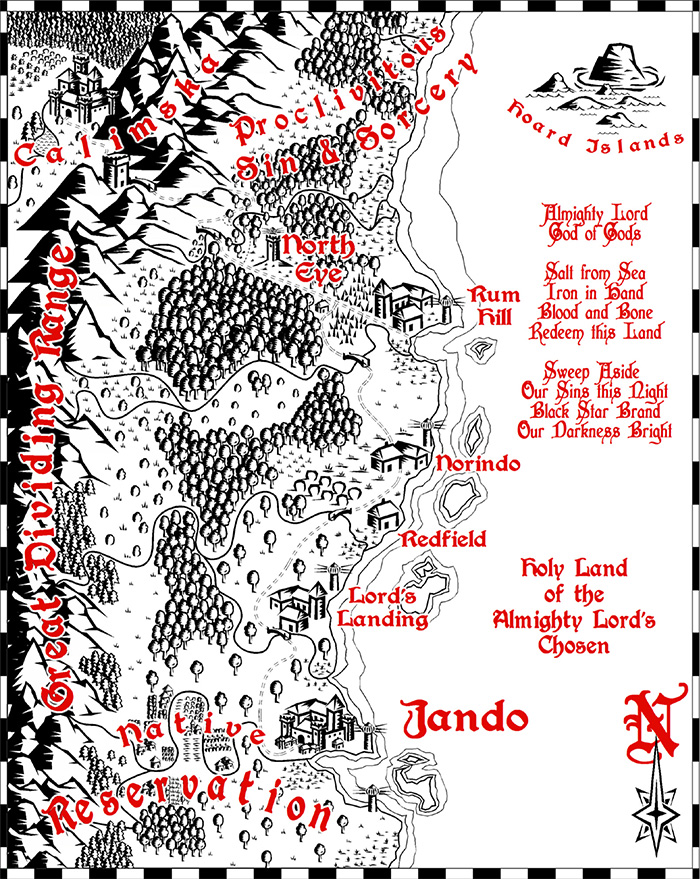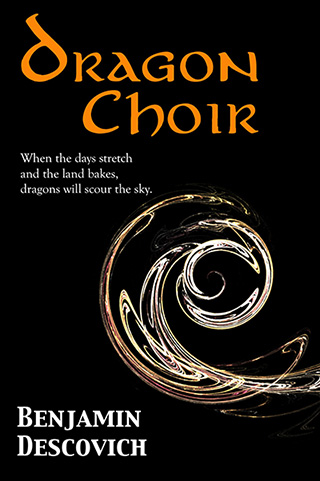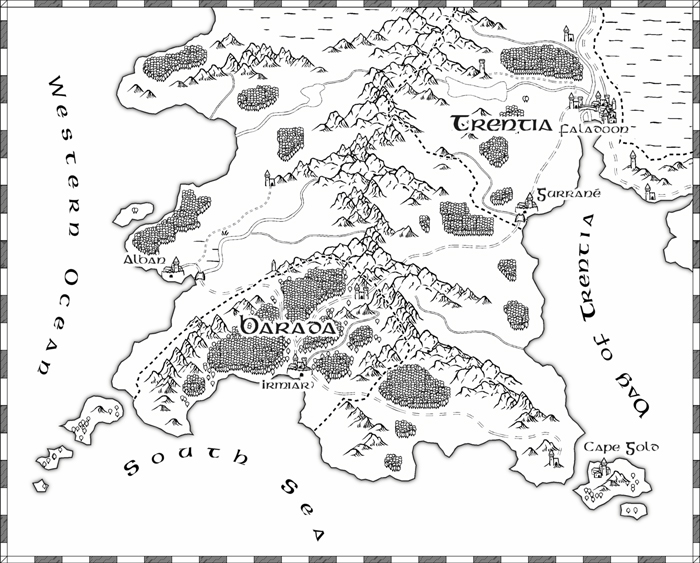[Cross-posted from the author’s blog. Benjamin contacted us about writing an article on using CC3 and creating a map for his book “Dragon Choir”. We are more than happy to share it here for your enjoyment.]
A Special Kind of Art
Maps are a special kind of art. Their beauty is often passed over for their function, but every map possesses a rare kind of potential, something magical.
Whoa there! Magical?
You must think I’m just a typical fantasy writer, banging on about magic again. Well that might be part of it, but let me explain the rest.
Jingle Bells
Ever since I was a kid, looking at a map would send jingling bells up my spine. From mud maps on a scrap of paper to detailed foldouts in National Geographic, I couldn’t resist them. My desk drawer was stuffed with piles of hand-sketched maps, documenting secret hideouts, traps and treasure. I even had a map of my hometown sticky-taped to my wall with annotations showing the locations of my friends’ houses.
My favourite fantasy books all began with a map and followed with a story that delivered the promise hidden in the landscape. Dungeons and Dragons lured me in to play the magic upon the map, and with the digital age came an evolving boon of sci-fi and fantasy computer games. Even today, at the bleeding edge of gaming, the most immersive and well-loved games revolve around a map. The map is our foundation; it is the lynchpin that connects us to the magic of possibility.
Mental Stretch
No matter how large or detailed the map, I examine the edges and wonder what exists outside its jurisdiction. Maps trigger a mental stretching that teases out the possible from the known. There is always more to a map than what you see; change the scale, change the perspective, and change your world.
Sticks and Sand
I contend that maps are a link to our deepest psychological urges of curiosity and territory. They are an embodiment of demarcation, inherently political in how they are depicted and interpreted. Once our primal drive involved patrolling the clan patch and scent marking trees as we went (I know some people who still do), wondering what lay on the other side of a river or ravine. We evolved from sticks drawing lines in the sand, to quill and ink, charting ever further across oceans to exotic lands, always pushing the boundaries of existing maps (often to the detriment of those in discovered territories). Today the great unknowns of nautical and geographic exploration expand further still with astronomical pioneers.
Maps are Magic
The humble map is the device that mentally transports us and inserts us in a physical terrain tinted with cultural heritage, lined with political borders and soaked in context. Maps weave a world and compress it into an image.
That, for me, is something magical.
Political Correctness and Cartography
For my debut novel, Dragon Choir, I wanted to create a map that spoke with the politics of the fictional mapmaker. My map establishes the bigoted perspective of a colonising power. Maps throughout history have been tools of propaganda, yet I have noticed that the majority of maps for fantasy fiction are devoid of political or cultural imprints. Fantasy maps can add extra punch to a narrative if they have a contextual point of view. Why be politically neutral if the plot of your book is politically contentious? Political borders are as fluid as the opinion of the powers that commission the maps.
Below is the map I created using ProFantasy software, Campaign Cartographer 3 (CC3). Why did I use this software? The simple answer is that it is the best mapmaking software on the market. The ProFantasy website and community is jam full of support and ideas. The CAD software is powerful and upgradable, allowing an amateur cartographer like me to produce a professional looking map like this.

 When the days stretch and the land bakes, the dragons will again scour the sky. A city of bones and a city of gold plot against each other while the rebellion gathers strength. A young man is caught in a tempest of intrigue that will forge a new era of freedom, or forever scar the land. He must discover the secret of the Dragon Choir to save his father and end the stranglehold of an unforgiven nation.
When the days stretch and the land bakes, the dragons will again scour the sky. A city of bones and a city of gold plot against each other while the rebellion gathers strength. A young man is caught in a tempest of intrigue that will forge a new era of freedom, or forever scar the land. He must discover the secret of the Dragon Choir to save his father and end the stranglehold of an unforgiven nation.
